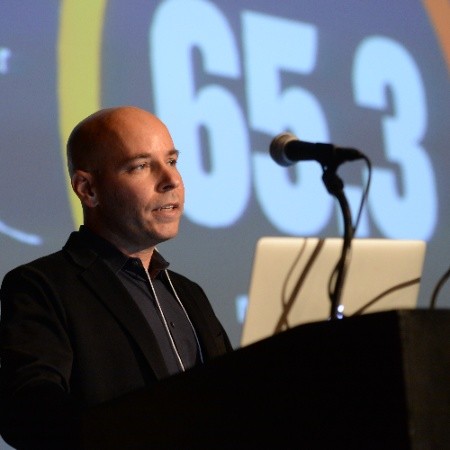Black Friday is almost here, which means the holiday shopping season is just about to begin. Even if Black Friday is not your cup of tea, you probably won’t be surprised to hear that retailers, nervous about the economy, are hoping for a relatively strong holiday shopping season. One key to making it happen is understanding consumer behavior, especially with regards to low-income shoppers, a group that seems to be growing by the day.
This is why retailers might find a Pricing Power Study conducted by the Cambridge Group interesting. The findings, according to an article published on HBR, suggest that lower-income shoppers are surprisingly resilient to price increases in a number of categories. These lower-income shoppers, claims the study, “think like savvy CFOs and are willing to pay more for categories that provide a usage benefit as well as a variety of economic benefits for their own "household P&L."” But is this really the case, given the evidence we have from markets like the food market? I’m not so sure.
The research has many interesting findings. Among them is that many lower-income shoppers think holistically about pricing, focusing more on total cost versus the individual cost of inputs. In food, for instance, the authors note that they saw that lower income shoppers think more about total cost-per-meal instead of cost per item. Another finding was that lower income shoppers appear willing to pay more now to hedge future costs. The example the authors give is of over-the-counter family planning products, better known as birth control. Between 2008 and 2010, prices of these products grew 17 percent, while sales grew by 14 percent. Lower income shoppers, they explain, may see OTC family planning as a way to control family costs in an uncertain economic environment.
While the first finding sounds reasonable, I find the second one more questionable. First, they give an example of a family of products that doesn’t have reasonable alternatives, unless you’re willing to consider sexual abstinence. Second, if you look at other examples, you might get different results. Take food for example.
If low-income shoppers are actually willing to hedge future costs, we would expect them to buy healthier food to help them maintain a good health and avoid future expenses on health problems associated with poor diet such as heart disease, diabetes and cancer. There is no better investment than that, and there’s no real tradeoff here because healthier food also happens to be higher quality.
You might wonder what about the price. Healthier food is usually considered to be more expensive. Researchers at the University of Washington found that calorie for calorie, junk foods not only cost less than fruits and vegetables, but junk food prices also are less likely to rise as a result of inflation. "If you have $3 to feed yourself, your choices gravitate toward foods which give you the most calories per dollar," one of the researchers told the New York Times. “Not only are the empty calories cheaper, but the healthy foods are becoming more and more expensive,” he added.
Not everyone agrees with this assumption – Mark Bittman, for example, made the case recently that it isn’t cheaper to eat highly processed food. He compared a typical order for a family of four at McDonald’s that would cost $23-$28 to a home-cooked meal that includes a roasted chicken with vegetables along with a simple salad and milk that costs about $14, or a meal of rice and canned beans with bacon, green peppers and onions that costs about $9. The bottom line he said is that most people can afford real food, including the nearly 50 million Americans who are enrolled in the food stamps program and receive about $5 per person per day.
Even if low-income shoppers agree with Bittman, and my guestimation is that their perception of the cost of healthier food is somewhat different, they are still more likely to choose unhealthy food options. It’s true that there are reports on growing presence of low income shoppers in farmers markets, but this is mostly anecdotal evidence and most evidence show that with less money in their pockets, consumers are more likely to turn to cheaper food options that lack high nutritional value. "The reality is that when you are income constrained the first area you try to address is having enough calories in your diet. And cheap sources of calories tend to be high in total fats and sugars," explains Eileen Kennedy, the dean of the Friedman School of Nutrition Science and Policy at Tufts University.
If retailers would judge low-income consumers based on their food purchasing habits during the recession, I guess it will be hard to convince them these are consumers who are resilient to price increases and are willing to pay more now to hedge future costs. More likely retailers would characterize them as consumers who are price savvy and seek to maximize the value of their purchase, but mostly with regards to the short run, ignoring for the moment the implications for the long run. In a second thought, maybe low-income consumers do think like CFOs after all.
Image credit: Fuschia Foot, Flickr Creative Commons
Raz Godelnik is the co-founder of Eco-Libris, a green company working to green up the book industry in the digital age. He is also an adjunct professor in the University of Delaware’s Alfred Lerner College of Business and Economics.

Raz Godelnik is an Assistant Professor and the Co-Director of the MS in Strategic Design & Management program at Parsons School of Design in New York. Currently, his research projects focus on the impact of the sharing economy on traditional business, the sharing economy and cities’ resilience, the future of design thinking, and the integration of sustainability into Millennials’ lifestyles. Raz is the co-founder of two green startups – Hemper Jeans and Eco-Libris and holds an MBA from Tel Aviv University.














